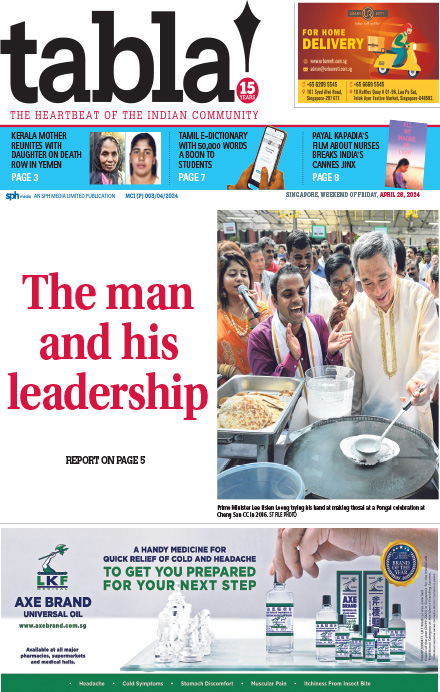The queue at the Chai O’Clock stall at the Geylang Serai Bazaar might have moved a tad quicker had it not been for the frequent queries from customers.
“What’s pani puri? Is it like a pastry?” asks a middle-aged Malay woman decked in traditional baju kurung and a headscarf.
Stall owner Krishan Prakash Nambiar patiently explains his creations while sprinkling shredded cheddar on a jacket potato, which he also sells at his stall.
The 27-year-old is helming a food stand for the first time at the annual Ramadan bazaar, and admits he does get overwhelmed at times by the crowd.
“We usually have stalls at the Deepavali bazaars, and it’s crowded there too – but it’s definitely much more packed here,” he tells tabla!
“We didn’t expect this at all so we’re really busy every day, and we’re bringing in stocks continuously.”
Celebrated for its lively atmosphere and diverse range of goods, the Geylang Serai Bazaar is back in full swing, running daily from 10am to midnight until April 9, the eve of Hari Raya Puasa.
The bazaar’s stalls – fully sheltered and with a main dining area – are smack-middle of the Wisma Geylang Serai hub. There are about 500 stalls and around 150 of them offer food and drink, while the rest sell clothes, decorations and Hari Raya goodies.
Much like in previous years, the popular stalls draw lengthy queues that usually begin snaking from 6pm, when the bulk of the crowd purchase food for their breaking of fast.
Stalls selling popular Indian street food are making some headway into that elite group. Aside from the pani puri, patrons are flocking to stalls selling traditional Indian foods like vadai and biryani, as well as less conventional ones (Fooditude) selling prata waffles.
“The pani puri is very convenient to eat on the go as we walk around the place,” said Miss Qisha Anthony, 31, referring to a set of six crispy golden-brown spheres filled with mint water that she’s holding in a takeaway box.
“And I love the taco puri (from the Mr Pani Puri stall). It’s minced beef and potato filling, drizzled with mayonnaisel; so good,” she adds.
Other Indian-influenced highlights include the Ministry of Rojak, various kebab stalls – there are about five of them – and of course, biryani.
At the bazaar, you can opt for the dish in two ways – in a copper pot (Sheikh Allauddin Copper Pot Biryani) or inside a bamboo (Bamboo Biryani).
After 15 minutes, I finally get to the front of the Chai O’Clock queue, and order the dahi-puri ($7 for five pieces).
“Our pani puri is special,” says Mr Krishan. “We actually have a special recipe that I shouldn’t reveal, but it’s okay, I’ll share it with you. We actually add pomegranate at the end, which makes it a little unique.
“It definitely won’t taste like the normal pani puri that you get in India because it has a Singaporean touch to it.”
“Next year I want to try selling more Indian items, like pav bhaji.”
That’s awesome, I think to myself. But he might also need a sign explaining what that is – so the line can move faster.

“We usually have stalls at the Deepavali bazaars, and it’s crowded there too – but it’s definitely much more packed here.”



